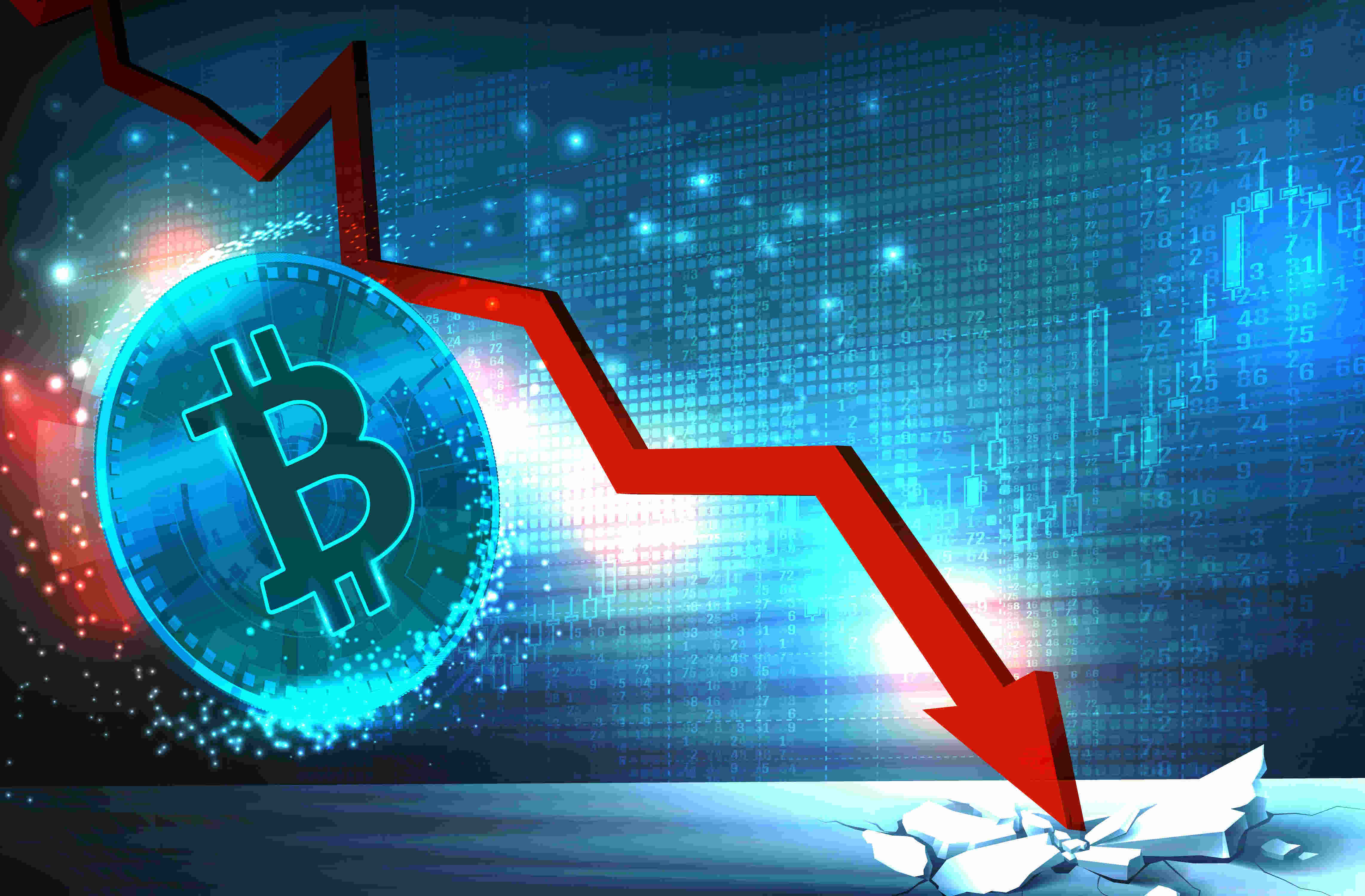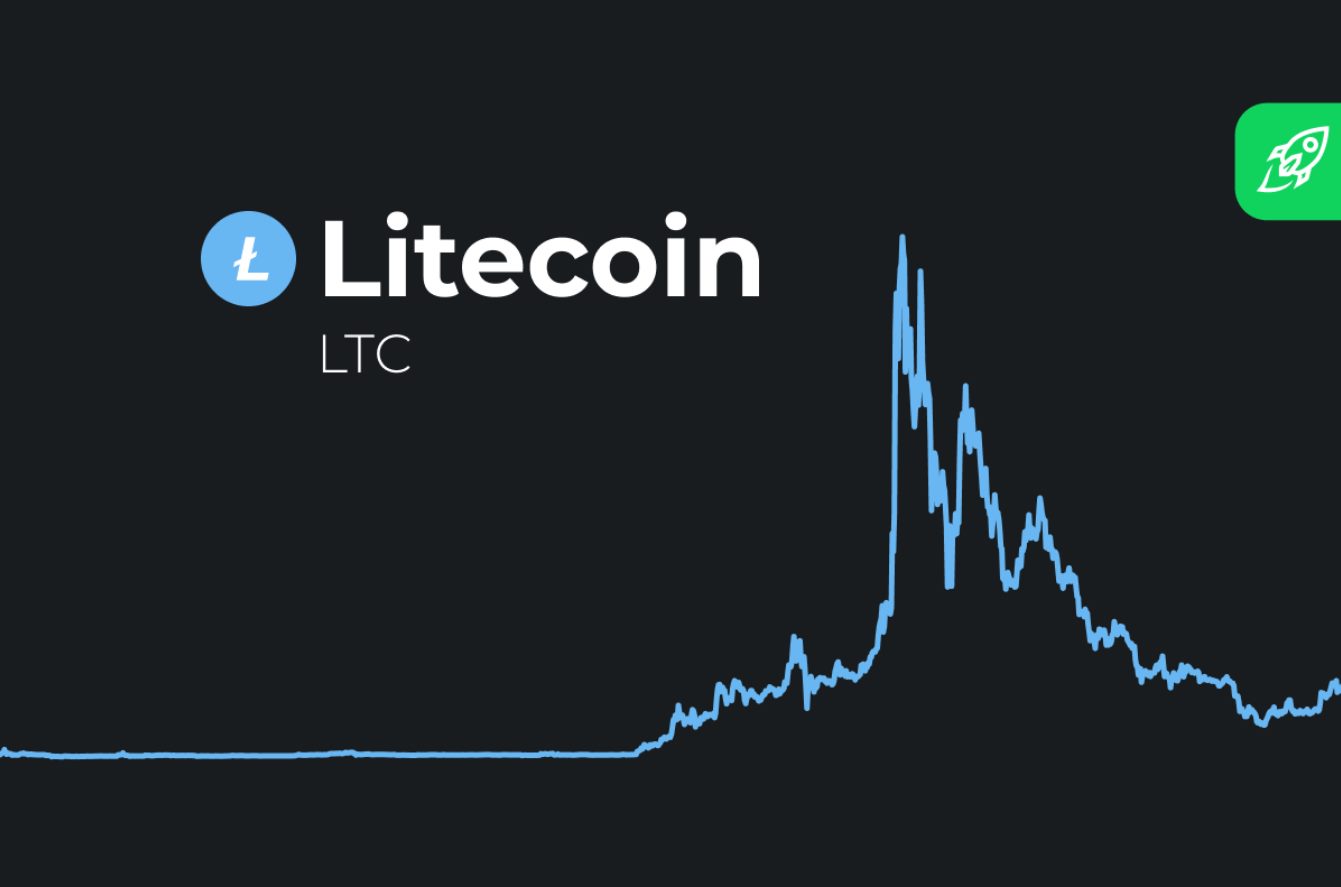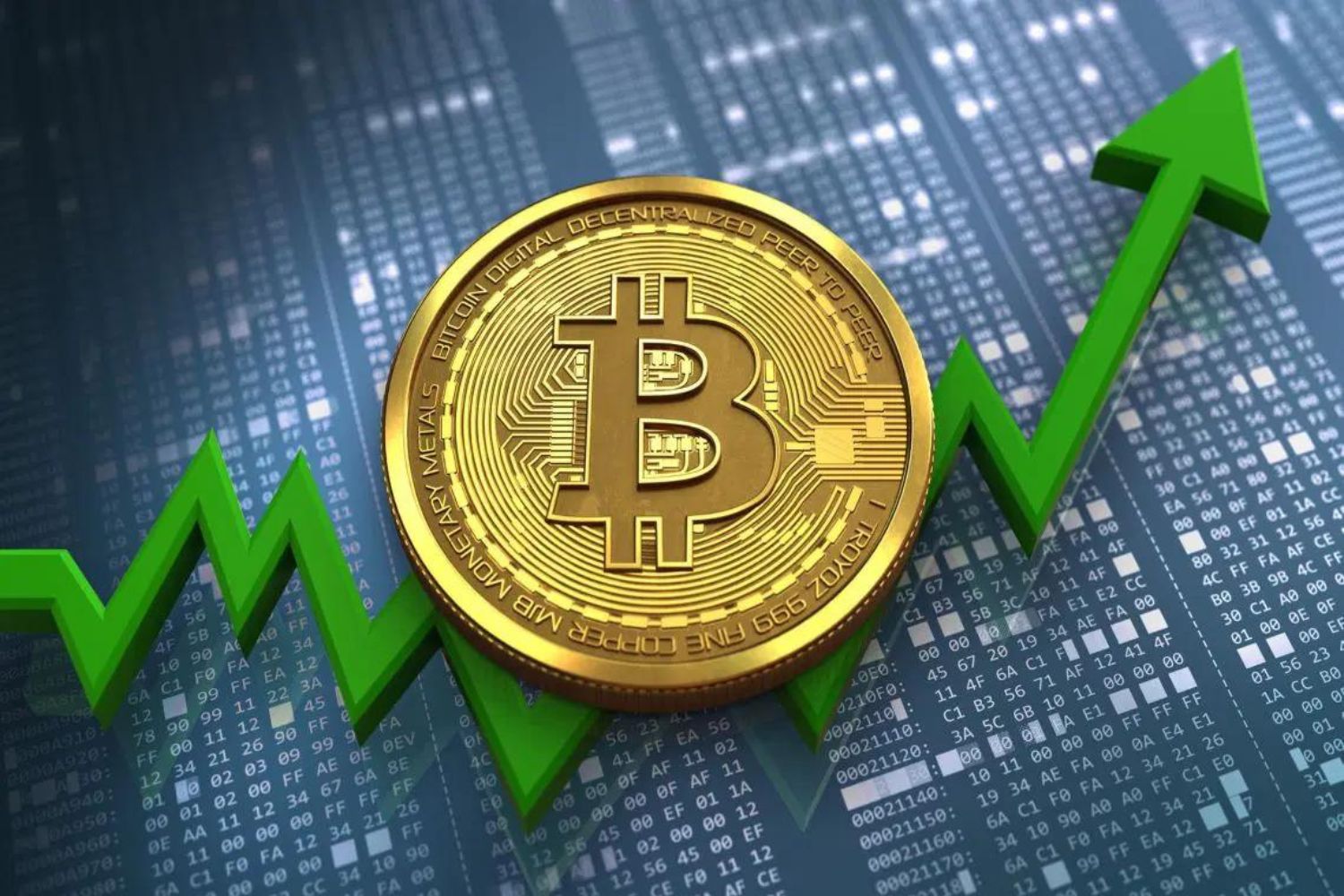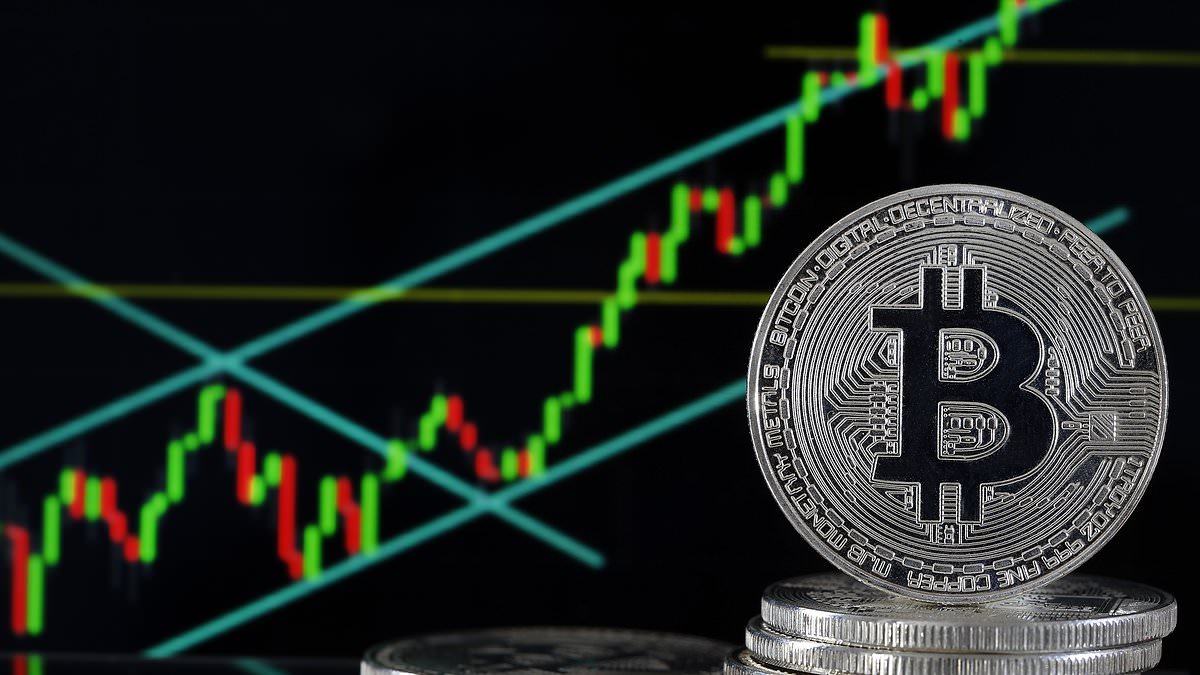Introduction
The price of Bitcoin, the pioneering cryptocurrency, has been a topic of great interest and speculation since its inception in 2009. As the first decentralized digital currency, Bitcoin operates on a technology called blockchain, which enables secure, transparent, and efficient transactions without the need for intermediaries such as banks or governments.
Bitcoin’s price is determined by a multitude of factors, including market demand and supply, speculation and trading, adoption and acceptance, regulatory environment, technological innovations, macroeconomic factors, and media and public perception. The interplay of these elements creates a complex and dynamic market for Bitcoin, where its price can experience significant fluctuations.
The concept of supply and demand plays a crucial role in determining the price of Bitcoin. As the number of people looking to buy Bitcoin increases, the demand rises, leading to a potential increase in its price. Conversely, if the supply of Bitcoin outstrips the demand, the price may experience downward pressure.
Speculation and trading activities also heavily influence Bitcoin’s price. The cryptocurrency market is known for its high volatility, attracting traders and investors looking to profit from price fluctuations. These speculative activities can drive the price of Bitcoin up or down, depending on prevailing market sentiment and investor behavior.
Another key factor impacting Bitcoin’s price is its growing adoption and acceptance. As more businesses and individuals start accepting Bitcoin as a form of payment, the demand for the cryptocurrency increases, potentially causing its price to spike. Additionally, news of major companies or institutions investing in or adopting Bitcoin can have a significant impact on market sentiment and drive the price higher.
The regulatory environment surrounding Bitcoin also plays a role in its price dynamics. Governments around the world have taken varied approaches to regulate cryptocurrencies, ranging from supportive policies to strict regulations. Changes in regulatory frameworks and announcements regarding potential bans or restrictions can create uncertainty in the market and impact the price of Bitcoin.
Technological innovations in the cryptocurrency space can also influence Bitcoin’s price. Advances in blockchain technology, scalability solutions, and security measures can enhance the utility and appeal of Bitcoin, attracting more users and investors. These developments can contribute to increased demand and potentially drive the price upwards.
Macroeconomic factors, such as inflation, economic instability, and geopolitical events, can also have an impact on Bitcoin’s price. During times of economic uncertainty, some investors may consider Bitcoin as a hedge against traditional markets, leading to increased demand and, therefore, a rise in its price.
The media and public perception of Bitcoin can also significantly affect its price. Positive news coverage, endorsements by influential figures, or negative narratives can shape public sentiment and impact investor behavior. Media hype or negative publicity can lead to increased buying or selling pressure on Bitcoin, influencing its price in the process.
Overall, the price of Bitcoin is influenced by a wide range of factors, all interacting in a complex ecosystem. Understanding these drivers can provide insights into why the price fluctuates and how it may evolve in the future. By keeping tabs on market dynamics and staying informed about the various factors at play, investors and enthusiasts can make more informed decisions in this rapidly evolving cryptocurrency market.
Market Demand and Supply
Market demand and supply are fundamental forces that drive the price of Bitcoin. The concept is simple: when the demand for Bitcoin exceeds the available supply, its price tends to rise, and vice versa.
The demand for Bitcoin is influenced by several factors. One of the primary drivers of demand is the growing interest and adoption of cryptocurrencies. As more people become aware of Bitcoin and its potential benefits, such as secure and borderless transactions, they seek to acquire and hold the cryptocurrency. The increasing demand from individual investors contributes to the overall market demand for Bitcoin.
Furthermore, institutional adoption of Bitcoin has also been a significant driver of demand. Large financial institutions and companies have started to recognize Bitcoin as a viable investment asset or a means of diversifying their portfolios. When institutions invest considerable sums of money into Bitcoin, it not only raises demand but also adds legitimacy to the cryptocurrency, attracting even more investors.
The supply of Bitcoin, on the other hand, is limited by its design. Bitcoin operates on a predetermined supply schedule, with a maximum of 21 million coins that can ever exist. This scarcity contributes to the value proposition of Bitcoin. As more people enter the market and demand grows, the limited supply intensifies competition, driving up the price.
Another factor that affects the market supply of Bitcoin is the mining process. Bitcoin miners solve complex mathematical problems to validate transactions and add them to the blockchain. In return for their efforts, they are rewarded with newly minted Bitcoin. However, the rate of Bitcoin mining decreases over time, and the reward halves approximately every four years in an event known as a “halving.” This halving event reduces the inflow of new supply, potentially contributing to an increase in price.
The relationship between market demand and supply has led to the cyclical nature of Bitcoin’s price. Bull markets occur when demand exceeds supply, resulting in a price surge. Conversely, bear markets arise when supply outweighs demand, leading to a price decline.
It is important to note that market demand and supply are influenced by a wide range of factors beyond individual investors and miners. Economic trends, geopolitical events, regulatory developments, and even media coverage can shape the market sentiment and impact the demand for and supply of Bitcoin.
Understanding the dynamics of market demand and supply is crucial for investors in the cryptocurrency space. By analyzing and monitoring these factors, investors can gain insights into the potential trajectory of Bitcoin’s price and make more informed investment decisions.
Speculation and Trading
Speculation and trading activities play a significant role in shaping the price of Bitcoin. The cryptocurrency market, including Bitcoin, is known for its high volatility and speculative nature, attracting traders and investors looking to profit from price fluctuations.
Speculation refers to the practice of buying and holding Bitcoin with the expectation of selling it at a higher price in the future. Traders and investors analyze various factors, including market trends, technical indicators, and news events, to make predictions about Bitcoin’s price movement. Based on these predictions, they execute trades to capture short-term gains or take positions in anticipation of long-term price appreciation.
The speculative nature of Bitcoin often leads to heightened price volatility. Large price swings can occur in short periods, presenting both opportunities and risks for traders. Volatility can create profitable trading opportunities for those who can accurately predict market movements and execute timely trades. However, it also exposes traders to potential losses if the market moves against their positions.
Trading volume also plays a role in influencing Bitcoin’s price. Higher trading volumes indicate increased market activity and can contribute to greater price volatility. When there is high demand for Bitcoin within a short period, it can lead to sudden price surges. Conversely, a significant supply of Bitcoin being sold in a short time can drive the price down.
Technological advancements have contributed to the growth of trading in the cryptocurrency market. The emergence of cryptocurrency exchanges and trading platforms has made it easier for individuals to buy, sell, and trade Bitcoin. These platforms provide users with real-time market data, advanced trading tools, and access to a global network of buyers and sellers, enabling them to participate in the market more actively.
Furthermore, the availability of derivatives products, such as Bitcoin futures and options, allows traders to speculate on Bitcoin’s price without owning the underlying asset. These financial instruments provide additional avenues for traders to profit from price movements and can impact the overall market sentiment.
It is important to note that while speculation and trading can contribute to price volatility, they do not necessarily reflect the underlying value or long-term prospects of Bitcoin. The market sentiment, influenced by speculative behavior, can sometimes deviate from the actual utility and adoption of the cryptocurrency.
Traders and investors engaging in speculative activities should exercise caution and employ risk management strategies. Proper research, technical analysis, and staying informed about market developments can help traders make informed decisions and minimize potential risks.
Overall, speculation and trading activities are integral to the cryptocurrency market and can significantly impact the price of Bitcoin. The interplay between market sentiment, trading volumes, and speculative behavior creates a dynamic environment where prices can experience rapid fluctuations.
Adoption and Acceptance
The adoption and acceptance of Bitcoin as a viable form of currency and investment vehicle greatly influence its price. As more individuals, businesses, and institutions embrace Bitcoin, the demand for the cryptocurrency increases, potentially leading to price appreciation.
One of the key drivers of adoption is the growing recognition of Bitcoin as a decentralized and secure means of transaction. Bitcoin’s infrastructure, built on blockchain technology, ensures privacy, transparency, and immutability. This appeal has led to increased acceptance among businesses in various industries, including e-commerce, hospitality, and tech startups.
Notably, the inclusion of Bitcoin as a payment option by prominent companies can significantly impact its perception and price. When well-known brands accept Bitcoin, it bolsters its credibility and enhances widespread trust and willingness to use it for transactions.
The adoption of Bitcoin is not limited to individual users and businesses alone. Institutional investors, such as hedge funds, asset management firms, and even major banks, have started to incorporate Bitcoin into their portfolios. The entry of institutional players adds liquidity and credibility to the market, attracting more investors and potentially driving up the price.
In addition to adoption as a payment method, Bitcoin’s use as a store of value or digital gold has gained traction. With its limited supply and decentralized nature, Bitcoin has been touted as a hedge against traditional financial systems and inflation. During times of economic uncertainty or currency devaluation, some individuals and investors turn to Bitcoin as a safe haven asset, potentially driving up its demand and price.
Furthermore, the integration of Bitcoin into financial services has contributed to its adoption. The availability of Bitcoin wallets, debit cards, and other payment solutions has made it easier for individuals to use Bitcoin in their daily lives. Such accessibility enhances the convenience and appeal of Bitcoin, encouraging its widespread adoption.
Government regulations and policies also play a significant role in the adoption of Bitcoin, as they determine its legal status and acceptance. Countries with favorable regulatory frameworks, fostering innovation and providing clarity on the use and taxation of cryptocurrencies, often see higher levels of Bitcoin adoption.
Efforts to improve the technical infrastructure surrounding Bitcoin, such as scalability solutions and user-friendly interfaces, also contribute to its adoption. As the technology becomes more accessible and user-friendly, it attracts a broader user base, which in turn drives demand and potentially raises the price.
The rate of Bitcoin adoption and acceptance varies across regions and sectors. While some countries have embraced Bitcoin with open arms, others have imposed restrictions or outright bans. The regulatory environment can have a significant impact on the adoption and acceptance of Bitcoin, influencing market sentiment and, consequently, its price.
Overall, the increasing adoption and acceptance of Bitcoin by individuals, businesses, and institutions contribute to its rising demand and potentially drive its price. The broader acceptance and integration of Bitcoin into traditional financial systems and daily transactions will likely shape the future of its price trajectory.
Regulatory Environment
The regulatory environment surrounding Bitcoin has a significant impact on its price dynamics. Governments worldwide have taken various approaches to regulate cryptocurrencies, ranging from supportive policies to strict regulations. Changes in regulatory frameworks and announcements regarding potential bans or restrictions can create uncertainty in the market and influence the price of Bitcoin.
Regulatory factors can affect Bitcoin in multiple ways. Firstly, the legal status of Bitcoin determines how it can be used and traded within a jurisdiction. Countries that officially recognize Bitcoin as a legal payment method or investment asset provide clarity and legitimacy to its use, encouraging adoption and investment. On the other hand, jurisdictions that impose restrictions or outright bans on Bitcoin create uncertainty, potentially dampening market sentiment and resulting in decreased demand and lower prices.
The level of regulation also affects Bitcoin exchanges and trading platforms. The requirements imposed on cryptocurrency exchanges can impact liquidity, security, and market transparency. Robust regulatory frameworks that prioritize investor protection and prevent money laundering and fraud can enhance market confidence and attract more participants, potentially boosting the price of Bitcoin. Conversely, overly restrictive regulations or lack of regulatory clarity can hinder market development and limit trading activity, impacting Bitcoin’s price negatively.
Another aspect of the regulatory environment is taxation. How governments tax Bitcoin transactions and holdings can have implications for market participants. Clear and fair taxation policies provide certainty for users and investors, reducing the risk of non-compliance and encouraging adoption. However, excessive or unclear tax regulations can create barriers to entry and may discourage individuals and businesses from engaging with Bitcoin, potentially leading to a decrease in demand and a subsequent impact on the price.
International regulatory collaboration is also important in shaping the regulatory environment for Bitcoin. As Bitcoin operates across borders, cooperation and coordination among different regulatory bodies can help create consistent and harmonized rules. A lack of international consensus or conflicting regulatory approaches can add complexity and uncertainty to the market, potentially affecting Bitcoin’s price.
Moreover, regulatory announcements and news can generate significant market reactions. Positive developments, such as the approval of Bitcoin exchange-traded funds (ETFs) or the launch of cryptocurrency-friendly regulatory sandboxes, can boost market sentiment and drive the price higher. Conversely, negative news, such as government crackdowns or regulatory warnings, can create fear and uncertainty, leading to market sell-offs and downward pressure on Bitcoin’s price.
It is crucial for market participants to stay informed about the evolving regulatory landscape surrounding Bitcoin. Changes in regulations can impact the demand, liquidity, and overall market sentiment, potentially influencing the price of Bitcoin. Monitoring regulatory developments and understanding the potential implications helps investors and users navigate the market more effectively and make informed decisions.
Technological Innovations
Technological innovations in the cryptocurrency space have a significant impact on the price of Bitcoin. Advances in underlying blockchain technology, scalability solutions, and security measures can enhance the utility and appeal of Bitcoin, attracting more users and investors, and potentially driving up its price.
Bitcoin operates on a decentralized ledger system known as blockchain. Innovations that improve the efficiency, scalability, and security of blockchain technology can positively influence Bitcoin’s value. For example, the development of layer-two scaling solutions, such as the Lightning Network, allows for faster and cheaper transactions, increasing the practicality of Bitcoin as a medium of exchange.
Security is a critical factor for both individuals and institutional investors considering Bitcoin. Technological advancements that enhance the security of Bitcoin holdings and transactions can instill confidence in users and attract more investors. Improvement in cryptographic techniques, multi-signature wallets, and secure custody solutions can mitigate the risk of potential hacks or theft, ultimately positively impacting Bitcoin’s price.
Interoperability is another area where technological innovations can drive Bitcoin’s price. The ability for Bitcoin to seamlessly interact and integrate with other blockchain networks and protocols expands its utility and reach. For instance, innovations in cross-chain bridging technologies enable the transfer of value between different blockchains, enhancing Bitcoin’s interoperability and potentially increasing its demand.
Moreover, innovations that address scalability challenges can have a significant impact on Bitcoin’s value. As user adoption grows, the demand for Bitcoin transactions increases, which can lead to congestion on the blockchain network and higher transaction fees. Technological solutions that enable higher transaction throughput, such as the development of sidechains or off-chain protocols, can alleviate scalability issues and enhance the usability of Bitcoin, potentially driving its price upwards.
The emergence of decentralized finance (DeFi) and smart contract platforms also presents opportunities for Bitcoin’s value appreciation. Innovations in the DeFi space, such as the creation of decentralized lending and borrowing protocols or yield farming opportunities, can attract more users to the ecosystem. As Bitcoin serves as a store of value and a widely recognized cryptocurrency, its integration into DeFi platforms can increase liquidity and potentially drive up its price.
Integration with the traditional financial system is another avenue where technological innovations can impact Bitcoin’s price. The development of regulated and compliant cryptocurrency exchanges, trading platforms, and custodial services can facilitate institutional adoption. As Bitcoin becomes more accessible and trusted by traditional financial institutions, it could experience increased demand and potential price appreciation.
It’s worth noting that not all technological innovations in the cryptocurrency space have a positive impact on Bitcoin’s price. Competition from other cryptocurrencies or the development of superior blockchain technologies could potentially diminish Bitcoin’s market dominance and impact its price negatively.
Overall, technological innovations in the cryptocurrency space can play a pivotal role in driving the price of Bitcoin. As advancements improve the efficiency, scalability, security, interoperability, and integration of Bitcoin, the cryptocurrency becomes more valuable and appealing to a broader range of users and investors.
Macro Economic Factors
Macro economic factors have a significant influence on the price of Bitcoin. The global economic landscape, inflation rates, economic stability, and geopolitical events all play a role in determining the value of Bitcoin as an alternative investment and store of value.
During times of economic uncertainty or financial instability, some investors turn to Bitcoin as a hedge against traditional markets. The decentralized nature of Bitcoin and its limited supply make it an attractive option for diversifying investment portfolios. When market participants perceive increased risks in traditional financial systems, they may choose to allocate a portion of their assets to Bitcoin, potentially driving up its demand and price.
Inflation rates also impact the price of Bitcoin. Bitcoin’s maximum supply of 21 million coins is fixed, making it resistant to inflation. When fiat currencies experience significant inflation or lose purchasing power, individuals may seek to preserve their wealth by investing in Bitcoin. This increased demand during periods of inflationary pressure can contribute to an appreciation in Bitcoin’s price.
Geopolitical events and government policies can also affect the value of Bitcoin. For instance, economic sanctions imposed on countries or political instability can drive individuals to seek alternative financial instruments and stores of value. Bitcoin, with its borderless and censorship-resistant nature, can become an attractive option in such situations, potentially driving up demand and raising its price.
Moreover, monetary policies adopted by central banks can impact Bitcoin’s price. Actions such as quantitative easing, interest rate cuts, or tightening of monetary policy can have ripple effects on global financial markets. These policy decisions can create volatility and uncertainty, prompting some investors to turn to Bitcoin as a potential hedge or safe haven asset.
The overall state of the global economy is also a crucial macroeconomic factor. Economic growth, employment rates, consumer confidence, and other indicators can influence investor sentiment and, consequently, the demand for Bitcoin. When the global economy is performing well, investors may have less incentive to invest in alternative assets like Bitcoin. Conversely, during economic downturns, investors may look for shelter in assets that are seen as independent of traditional economic cycles, potentially driving up demand for Bitcoin.
It is important to note that the relationship between macroeconomic factors and Bitcoin’s price is complex and multifaceted. The interplay between global economic dynamics and the perception of Bitcoin as a safe haven asset can lead to both positive and negative impacts on its price, depending on the specific circumstances and market sentiment.
Understanding and monitoring macroeconomic factors is crucial for investors and individuals interested in Bitcoin. By staying informed about global economic trends, monetary policies, and geopolitical developments, market participants can gain insights into potential shifts in demand and make better-informed decisions regarding their involvement with Bitcoin.
Media and Public Perception
The media and public perception of Bitcoin can have a substantial impact on its price. News coverage, social media sentiment, endorsements by influential figures, and overall market sentiment all play a role in shaping public perception and influencing investor behavior.
The media has the power to create narratives around Bitcoin, which can significantly impact its price. Positive news coverage, such as reports on the growing adoption of Bitcoin or the development of blockchain technology, can generate optimism and attract new investors. Conversely, negative news, such as reports of hacking incidents or regulatory crackdowns, can create fear and uncertainty, leading to selling pressure and price declines.
Social media platforms, such as Twitter and Reddit, also play a crucial role in shaping public perception of Bitcoin. The sentiment expressed by influential individuals or online communities can quickly spread and influence market sentiment. Positive endorsements and recommendations from well-known figures or communities can generate excitement and drive up demand for Bitcoin, potentially boosting its price. On the other hand, negative sentiment or criticism can lead to skepticism and decreased demand.
Celebrity endorsements can have a substantial impact on public perception and, in turn, the price of Bitcoin. High-profile individuals, including entrepreneurs, athletes, and entertainment figures, have publicly expressed their support for Bitcoin. Their endorsement can attract attention from their fans and followers, increasing awareness and potentially driving up demand for Bitcoin. It’s worth noting that these endorsements should be taken with caution and not solely relied upon for investment decisions.
Market sentiment, which is influenced by media coverage and public perception, can create self-reinforcing cycles. Positive news or endorsements can trigger a surge in buying interest, leading to price increases. This, in turn, can create a positive feedback loop, with rising prices fueling further media coverage and investor enthusiasm. Conversely, negative news or sentiments can trigger selling pressure, leading to price declines. The psychological impact of market sentiment on Bitcoin’s price should not be underestimated, as it can often lead to amplified price movements.
Public perception is not solely shaped by media coverage and social media sentiment but can also be impacted by personal experiences and word-of-mouth recommendations. When individuals witness others benefiting from their Bitcoin investments or observe positive use cases of cryptocurrencies, it can influence their perception and prompt them to invest, potentially driving up demand and prices.
It’s important for investors and market participants to approach media coverage and public perception of Bitcoin with a critical mindset. While media plays a significant role in shaping narratives, it’s essential to conduct thorough research and exercise caution before making investment decisions based solely on news or public sentiment.
Overall, the media and public perception have a profound impact on Bitcoin’s price. Positive news, endorsements, and widespread optimism can drive up demand and prices, while negative news or sentiment can lead to selling pressure and price declines. Staying informed and critically evaluating media coverage helps individuals navigate the market more effectively and make sound investment decisions.
Conclusion
The price of Bitcoin is influenced by a wide range of factors, all interacting in a complex ecosystem. Understanding these drivers provides insights into why the price fluctuates and how it may evolve in the future. Market demand and supply, speculation and trading, adoption and acceptance, regulatory environment, technological innovations, macroeconomic factors, and media and public perception all contribute to the dynamics of Bitcoin’s price.
The interplay of market demand and supply determines the equilibrium price of Bitcoin. Factors such as growing adoption, institutional investment, and mining rewards impact the demand and supply dynamics, ultimately affecting the price.
Speculation and trading activities in the cryptocurrency market can contribute to Bitcoin’s price volatility. Traders and investors analyze market trends and execute timely trades to capture short-term gains or make long-term investments, influencing market sentiment and price fluctuations.
The adoption and acceptance of Bitcoin as a viable form of currency and investment vehicle is another crucial factor shaping its price. Increasing recognition, institutional adoption, and integration into financial services contribute to its demand, potentially driving up the price.
The regulatory environment surrounding Bitcoin plays a significant role in its price dynamics. Government regulations, legal status, taxation policies, and international coordination influence market sentiment and can impact the demand and supply of Bitcoin accordingly.
Technological innovations in the cryptocurrency space, including advancements in blockchain technology, scalability solutions, and security measures, impact the utility and value of Bitcoin. Improvements in these areas enhance Bitcoin’s appeal and potential for adoption, potentially driving up its demand and price.
Macroeconomic factors, such as economic stability, inflation rates, and geopolitical events, can influence the price of Bitcoin. During times of economic uncertainty or inflationary pressure, Bitcoin may be perceived as a hedge against traditional financial systems, leading to increased demand and potential price appreciation.
Additionally, media coverage and public perception significantly impact Bitcoin’s price. Positive or negative news, endorsements from influential figures, and overall market sentiment can create significant price movements as investors react to these narratives.
Overall, Bitcoin’s price is influenced by a complex interplay of multiple factors. By staying informed about market dynamics, regulatory developments, technological advancements, and public sentiment, investors can make more informed decisions in this rapidly evolving cryptocurrency market.

























